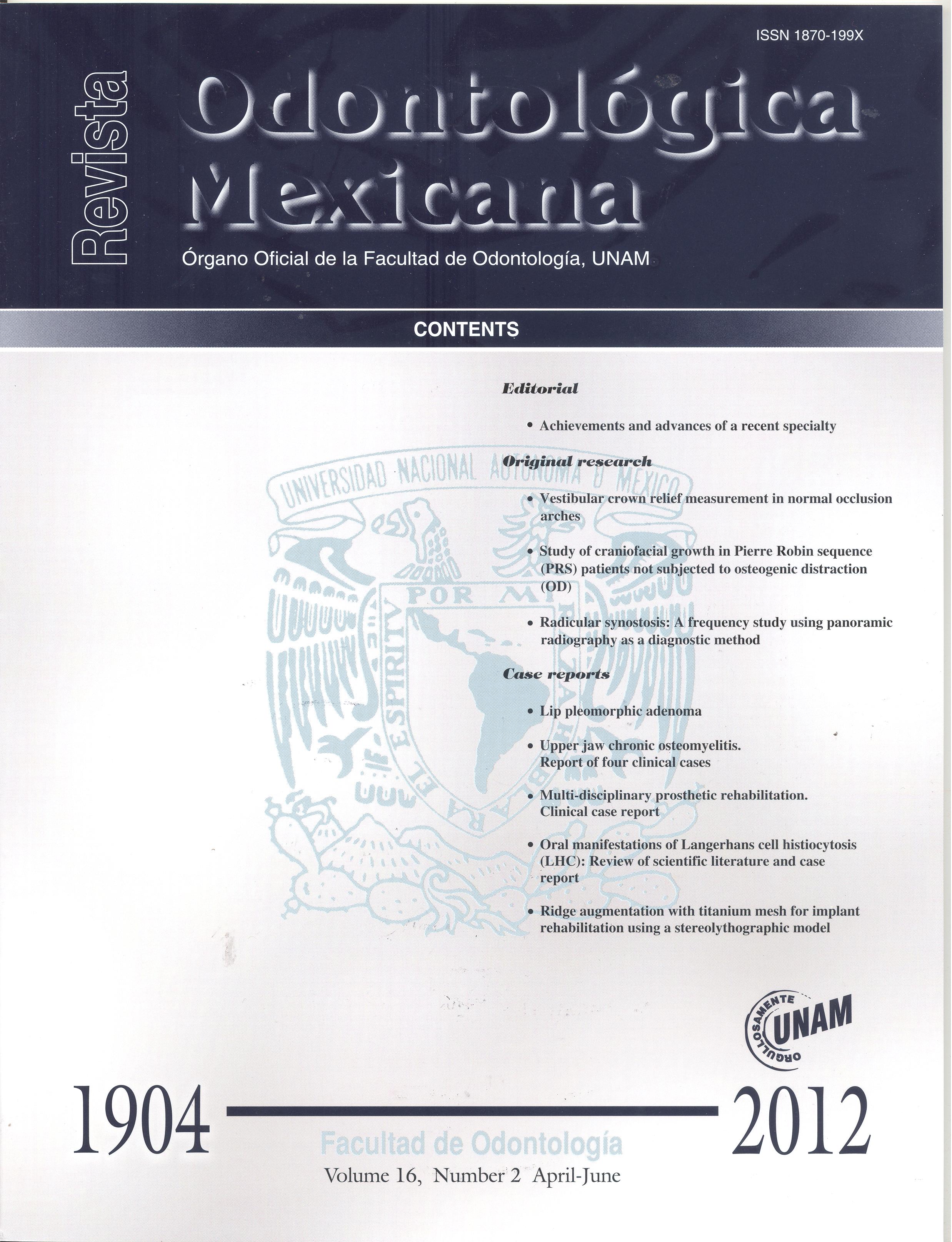Vestibular crown relief measurement in normal occlusion arches
Contenido principal del artículo
Resumen
Masticatory system function is related , among other aspects, to occlusal configuration characteristics. Through the years, different occlusion concepts have been described until reaching the functional occlusion concepts that we nowadays use. Common characteristics of ideal or normal occlusion have been established. Nevertheless, in our days, several authors agree upon the concept that occlusal characteristics are specific to each individual. The aim of this study was to determine vestibular crown characteristics of both arches by means of dental crown rotation measurements . The study was conducted in a specific Mexican population not subjected to orthodontic treatment and considered normal. Dental crown rotation was measured in 110 models. Use was made of an appliance and an attachment which allowed measurement of dental surfaces with the aid of a laser beam. Results show a similar pattern in left and right side rotations of a same region (upper and lower jaw). All average rotations of lower teeth measured between -1º and 1º. Average rotation of upper jaw teeth ranged from -2º to 8.5º. In both upper and lower regions, central, lateral and canine teeth presented a negative average rotation; premolars and molars presented a positive average rotation. Upper and lower molars presented greater standard deviation. This study reached the conclusion that, due to variations observed in crown rotation, it is not appropriate to standardize its values to conduct orthodontic treatments. It is more convenient to use appliances individually tailored for each patient.
Detalles del artículo
Citas en Dimensions Service

Revista Odontológica Mexicana por Universidad Nacional Autónoma de México se distribuye bajo una Licencia Creative Commons Atribución-NoComercial-SinDerivar 4.0 Internacional.
Basada en una obra en http://revistas.unam.mx/index.php/rom.
